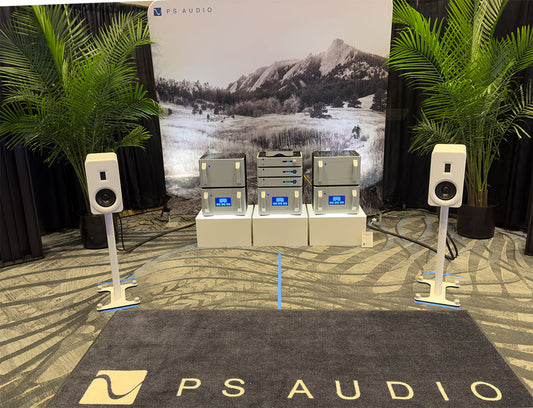Wikipedia describes the Decca Tree as a 3 microphone spaced array most commonly used for orchestral recording. The technique was developed in the early 1950s and first commercially used in 1954 by Arthur Haddy, Roy Wallace, and later refined by engineer Kenneth Ernest Wilkinson and his team at Decca Records, to provide a strong stereo image.
The classic Decca Tree setup uses three omnidirectional microphones arranged in a "T" pattern outlining a triangle, often equilateral; the center microphone is mixed with the two spaced microphones to fill the "hole in the middle" in their imaging; it points the sound source.
Here's a picture of it.

This works really well for large groups or big halls, but it has a fatal flaw. Listening back to recordings I've made using this technique, the stereo image is really good but lacks the hall ambiance. The perfect setup would have both hall ambiance and live stereo capture with control over the center fill.
As I get more involved in the recording process I wind up experimenting a lot. As mentioned in my post,
Being There, the first step in any quality recording is to listen. Listen from every angle you can. Once you get a handle on how it sounds live you can then work to capture the essence and life you hear in the music.
(This is in essence the same technique we use designing equipment. Knowing what it
should sound like we work with the circuits until it does. Voicing.)
One of the first lessons is that a single mono microphone doesn't cut it. A singer, solo guitar or horn, or even a small group cannot be captured as they sound live with a mono microphone. Why? For the same reason you can't either. Plug one ear with your finger and close your eyes and listen. We have two ears and two eyes for a reason.
What's needed is a stereo microphone—even for a single source.
The most realistic stereo microphone setup I have found is the Blumlein. This two microphone setup was invented by stereo sound's inventor, Allen Blumlein. The technique places two figure-8 pattern microphones at 45˚ angles to each other. This creates a 360˚ capture that looks like this:

Placed properly it sounds remarkably live. Many Octave recordings employ this method.
The modified Decca Tree setup I have been using as of late combines a Blumlein left and right capture with a center fill provided by the third microphone, typically a front facing cardioid pattern.
The results have been amazing and I cannot wait for you to hear them in upcoming Octave releases.
 This works really well for large groups or big halls, but it has a fatal flaw. Listening back to recordings I've made using this technique, the stereo image is really good but lacks the hall ambiance. The perfect setup would have both hall ambiance and live stereo capture with control over the center fill.
As I get more involved in the recording process I wind up experimenting a lot. As mentioned in my post, Being There, the first step in any quality recording is to listen. Listen from every angle you can. Once you get a handle on how it sounds live you can then work to capture the essence and life you hear in the music.
(This is in essence the same technique we use designing equipment. Knowing what it should sound like we work with the circuits until it does. Voicing.)
One of the first lessons is that a single mono microphone doesn't cut it. A singer, solo guitar or horn, or even a small group cannot be captured as they sound live with a mono microphone. Why? For the same reason you can't either. Plug one ear with your finger and close your eyes and listen. We have two ears and two eyes for a reason.
What's needed is a stereo microphone—even for a single source.
The most realistic stereo microphone setup I have found is the Blumlein. This two microphone setup was invented by stereo sound's inventor, Allen Blumlein. The technique places two figure-8 pattern microphones at 45˚ angles to each other. This creates a 360˚ capture that looks like this:
This works really well for large groups or big halls, but it has a fatal flaw. Listening back to recordings I've made using this technique, the stereo image is really good but lacks the hall ambiance. The perfect setup would have both hall ambiance and live stereo capture with control over the center fill.
As I get more involved in the recording process I wind up experimenting a lot. As mentioned in my post, Being There, the first step in any quality recording is to listen. Listen from every angle you can. Once you get a handle on how it sounds live you can then work to capture the essence and life you hear in the music.
(This is in essence the same technique we use designing equipment. Knowing what it should sound like we work with the circuits until it does. Voicing.)
One of the first lessons is that a single mono microphone doesn't cut it. A singer, solo guitar or horn, or even a small group cannot be captured as they sound live with a mono microphone. Why? For the same reason you can't either. Plug one ear with your finger and close your eyes and listen. We have two ears and two eyes for a reason.
What's needed is a stereo microphone—even for a single source.
The most realistic stereo microphone setup I have found is the Blumlein. This two microphone setup was invented by stereo sound's inventor, Allen Blumlein. The technique places two figure-8 pattern microphones at 45˚ angles to each other. This creates a 360˚ capture that looks like this:
 Placed properly it sounds remarkably live. Many Octave recordings employ this method.
The modified Decca Tree setup I have been using as of late combines a Blumlein left and right capture with a center fill provided by the third microphone, typically a front facing cardioid pattern.
The results have been amazing and I cannot wait for you to hear them in upcoming Octave releases.
Placed properly it sounds remarkably live. Many Octave recordings employ this method.
The modified Decca Tree setup I have been using as of late combines a Blumlein left and right capture with a center fill provided by the third microphone, typically a front facing cardioid pattern.
The results have been amazing and I cannot wait for you to hear them in upcoming Octave releases.









